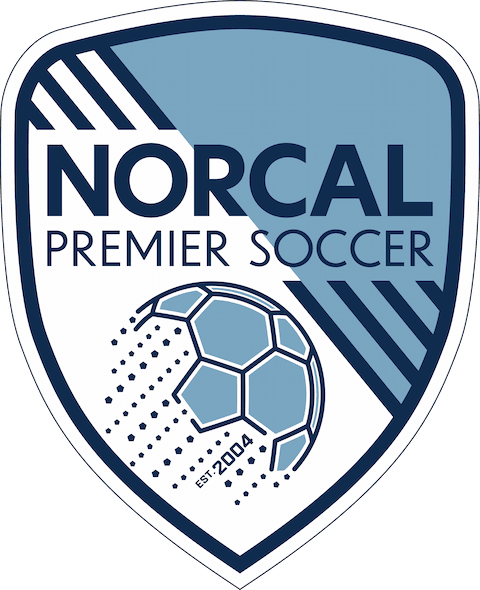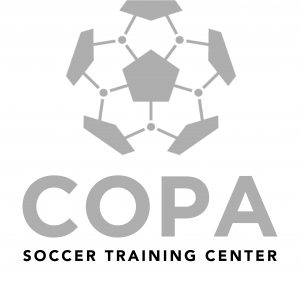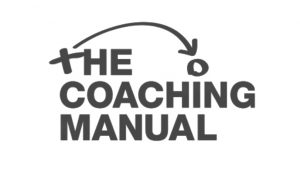Q&A: Sheriffs FC Director of Coaching Omar Cervantes

Note: NorCal Premier Soccer regularly sits down with an influential figure in the youth soccer landscape to pick their brain about a variety of different topics that are relevant in the current soccer environment in the United States. For this edition we spoke with Sheriffs FC Director of Coaching Omar Cervantes. A California native two decades into his coaching career, Cervantes previously served as the DoC for Tri Valley and San Ramon Futbol Club before moving into his current position in 2017. In 2019, Cervantes won the Positive Coaching Alliance’s Double-Goal Coach award, given to coaches who strive to win but also pursue the more important goal of teaching life lessons through sport. Cervantes currently holds a USSF “A” License.
NorCal: How did you fall in love with soccer?
Cervantes: Playing and being around the game with my family and friends has been part of my life as far back as I can remember. It was big events, like past World Cups, in my younger years that really brought to my attention how big the game was globally. The 1986 World Cup kind of brought it to the forefront to me. That summer I was Hugo Sanchez or Diego Maradona when my brother and I played in the backyard. The 86 World Cup was the first time I could really remember watching soccer. We just moved from California to Arizona so that summer sticks out pretty heavily, and the World Cup was in Mexico and my family is Mexican so that added to the experience. But I first remember vividly watching matches during the 1990 World Cup. I remember racing home after the last day of school in 6th grade to watch Cameroon pull off the upset against Argentina. During the 1994 World Cup, I got to go to four matches, including the US vs. Brazil at Stanford Stadium. That was actually the first high level match that I remember attending, and I was amazed with the Brazilian fans energy and passion before the game, it really hyped me up and made the experience so much more enjoyable.
NorCal: What was youth soccer like when you were a player growing up?
Cervantes: I grew up in East San Jose and most everyone in our neighborhood played soccer. I played in the local recreational league before we moved to Phoenix. I remember joining club soccer at U10 and played for two years before we moved back to California. I spent my U13 through U19 years playing with Ajax United in Modesto. There was so much talent in the Central Valley, there still is, and we had quite a few Ajax teams doing really well during the mid-to-late 90.. There were a lot of good teams in the area, a couple of state champions, and looking back at it now, there were talented players all around.. I don’t remember the tournament scene being that big, but I vividly remember State Cup always being a highlight of each season. Maybe the level of coaching wasn’t as high back then, but there were still a lot of high-level players and for the most part we had coaches who cared about the players. As I got older and into high school, I started playing a lot more pickup and a lot more in men’s leagues with a lot of the guys from my club team to get extra training and games because I didn’t have a ton of people in my neighborhood in Modesto who played, it was just kind of myself or me and my brother kicking the ball around otherwise.
NorCal: What was your playing career like after that?
Cervantes: I graduated from UC Santa Barbara, and played on the original club team at the school for a few years. In between, I spent a season playing at Modesto Junior College, and I was fortunate to have taken part in various amateur and semi-pro teams until I began coaching.
NorCal: So did you stay involved with the game right after college or how did you get back into it?
Cervantes: I began coaching during my final college years, and I really enjoyed volunteering and being able to help others, and it helped me see the game differently. When I graduated I spent a summer working with my brother who was the director of coaching at Walnut Creek Soccer Club at the time. I had done some AYSO coaching while I was in Santa Barbara, but never anticipated or thought it would be my profession. I actually laughed at the thought when my brother asked if I’d be interested in pursuing that career path. He was fully immersed in the NorCal soccer scene and I had no clue the landscape had changed so much in the time I was at school. Following that first camp I worked with him, I fell in love with coaching and started giving it all my attention, I was hooked. I enjoyed working with kids, staying connected to people and the game.
NorCal: You mentioned playing a lot of pickup when you grew up. Pickup almost doesn’t exist anymore or at least it doesn’t exist like it did when you were growing up so there really isn’t a ton of unstructured play anymore. Do you think we’ve lost something that was a good force for development as pickup has gone away?
Cervantes: In our area, we would have our club kids coming to the fields everyday for pick-up before Covid. We’ve had to  shut that down for obvious reasons, but the pick-up culture exists in pockets. The crazy thing is that since June or July I’ve seen more random pick-up games than I’ve ever seen before in the East bay. I feel the lack of formal sanctioned games is pushing people into finding creative solutions to play. I kick the ball around a lot with my two kids at the park, and I’ve never seen so much pick-up as I do now compared to pre-Covid. Kids are going to the park and going out and playing, and there aren’t coaches out there telling the kids what to do. I do think that things have been lost in not allowing kids to free play, and we know the many reasons it’s not so prevalent. Neighborhoods have become more spread out, not everyone in your neighborhood might be playing outside, there are not a lot of spaces or places to safely play, everything is perceived to be a little more dangerous than it was back in the day when you would just go out to play with your friends. All those factors lead to situations where there aren’t opportunities to play pickup. And then because there are fewer of those opportunities, kids also have less opportunity to be creative and try new things. If you read about any top player ever, and I’m sure anyone you’ve interviewed probably would agree, players will credit the street as the primary reason they’re so good. They’ll say that where they learned to be their best or felt their best, when they look back at it, they’ll say it was during that free play, that unstructured play, literally in the streets. When we say street soccer or pick-up soccer here, it’s much different than in other parts of the world, but you can still find pockets, like where we are, where maybe one has to organize a little to get kids together, and then get out of the way. Our courts are a great place to get some intense games where the winner stays on and no one messes with it. We need more places like that. Basketball does a fantastic job with that across the country because they have hoops that aren’t locked up and I think there are some other areas where that happens with soccer, too. I’m doing some research on whether or not players are coming out of those areas and how they’re developing, but I do think there’s a lot lost in not having that regular ability to play pickup.
shut that down for obvious reasons, but the pick-up culture exists in pockets. The crazy thing is that since June or July I’ve seen more random pick-up games than I’ve ever seen before in the East bay. I feel the lack of formal sanctioned games is pushing people into finding creative solutions to play. I kick the ball around a lot with my two kids at the park, and I’ve never seen so much pick-up as I do now compared to pre-Covid. Kids are going to the park and going out and playing, and there aren’t coaches out there telling the kids what to do. I do think that things have been lost in not allowing kids to free play, and we know the many reasons it’s not so prevalent. Neighborhoods have become more spread out, not everyone in your neighborhood might be playing outside, there are not a lot of spaces or places to safely play, everything is perceived to be a little more dangerous than it was back in the day when you would just go out to play with your friends. All those factors lead to situations where there aren’t opportunities to play pickup. And then because there are fewer of those opportunities, kids also have less opportunity to be creative and try new things. If you read about any top player ever, and I’m sure anyone you’ve interviewed probably would agree, players will credit the street as the primary reason they’re so good. They’ll say that where they learned to be their best or felt their best, when they look back at it, they’ll say it was during that free play, that unstructured play, literally in the streets. When we say street soccer or pick-up soccer here, it’s much different than in other parts of the world, but you can still find pockets, like where we are, where maybe one has to organize a little to get kids together, and then get out of the way. Our courts are a great place to get some intense games where the winner stays on and no one messes with it. We need more places like that. Basketball does a fantastic job with that across the country because they have hoops that aren’t locked up and I think there are some other areas where that happens with soccer, too. I’m doing some research on whether or not players are coming out of those areas and how they’re developing, but I do think there’s a lot lost in not having that regular ability to play pickup.
NorCal: As a director of coaching, how do you create those unstructured playing opportunities for the kids?
Cervantes: For us specifically, we have these two mini fields that we built, five-a-side fields, where our kids play with futsal rules. So we’re training three days a week, for a day a week sometimes we’ll open up the park and then just say, “hey, we’re going to play, the field’s going to be open 9:00 a.m. to 11:00 a.m. and all players 8 to 12 are invited to play.” All we did was block out the times for the kids, and the older kids tend to do a good job of leading the way. We still have our actual training days, but we try to organize times and days where people can meet and know that there’s a free space where they can play. And then when those fields aren’t available, we’re encouraging kids to get on WhatsApp or TeamSnap to say, “hey I’m going to be at this park at this time if anyone wants to join me.”
NorCal: Sheriffs FC is a unique program. For those who aren’t aware of it, could you give a brief description of what you guys are doing there and how it’s different from some of the other clubs around NorCal?
Cervantes: I think the obvious difference between the work that we’re doing is the fact that it’s cost-free fútbol. It doesn’t matter who you are, what you look like, what languages you speak, we provide a safe, nurturing environment for kids who want to train and play. We have professional coaches, access to NorCal Premier, MLS NEXT, we have a Puma uniform contract, etc. We’ve done our best to provide a true club atmosphere where player development, the fields, the referees, gear, everything is on par with what everyone else is doing or what pay-to-play clubs are doing. The majority of the money, the funding is coming from the Alameda County Sheriff’s Office as a crime prevention measure in something called “community capitals policing.” So they fund Deputy Sheriffs’ Activities League programs in the community on a variety of levels to ensure that there is a healthy and safe place for people to live and to thrive. We do our best to give kids a positive outlet and allow them to have fun and be healthy and safe. Soccer is a huge draw in our community and our club provides an opportunity for so many kids.
NorCal: You’re one of the people who’s involved with the newly-formed NorCal Premier Soccer Latino Committee. Can you tell us more about what you guys are trying to accomplish there?
Cervantes: I was on a panel with Jesus Mata, Hugo Perez, Messias dos Santos and Carlos Zavala for a NorCal hosted event. It was just a platform for coaches in NorCal who were either directors or worked in other similar positions, where we could answer questions about what it was like or what our clubs were like and shed a little bit of light on our programs. We were approached later on to potentially mirror the good work of the Women’s Committee. So we decided we wanted something to try to help the Latino community within NorCal and even outside of it too. Several new and amazing people on this new committee and we are just getting started, so be on the lookout for some updates soon!
NorCal: Is there anything else that you’d like to add?
Cervantes: Just in general, I think finding ways to reduce costs for families — it doesn’t matter if they have the means or not — so we can include so many more people in the game. I know we can all be more creative in finding ways to sustain our clubs and create new programs and opportunities to benefit our communities. I hope our model at least leads to conversations about access and opportunity for everyone, not just the people who can afford the exorbitant fees.












